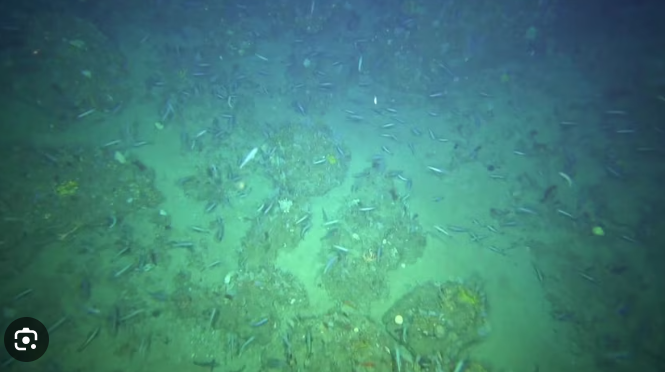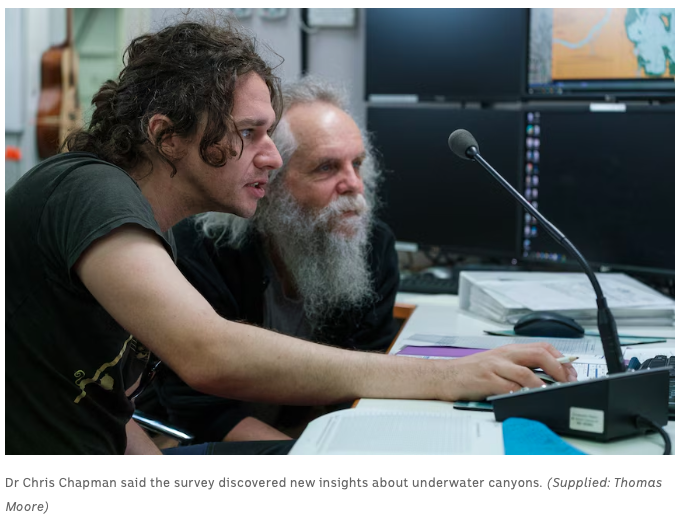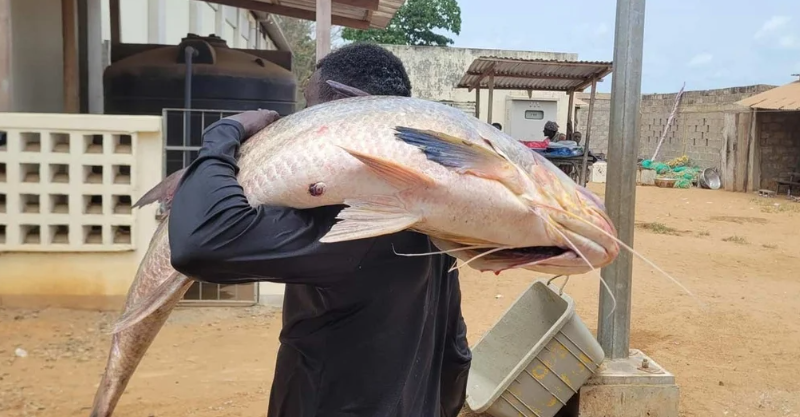Deep below the surface, in waters off Australia’s east coast, lies a network of what scientists are now calling « sea floor super highways ».
The scientific name is submarine canyons, which are large cliffs and deep ravines kilometres underwater.
A first-of-its-kind survey has now proved the canyons are a hotbed for marine species, stunning experts.
« When we poked our nose into these deep submarine canyons, it was quite incredible. We saw deep coral reefs and a stingray down at almost 3,000 metres, » said co-chief scientist Dr Chris Chapman.
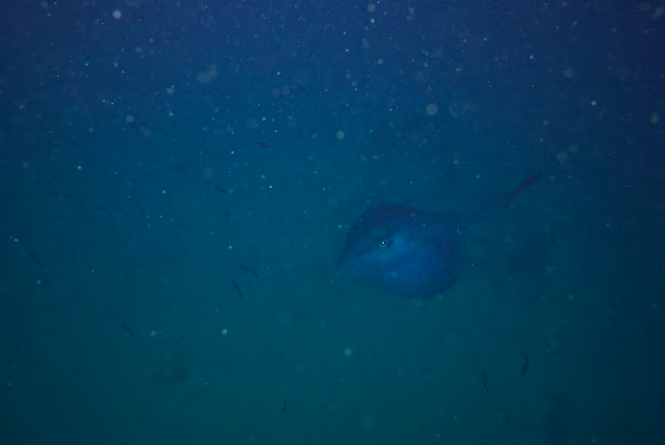
Researchers spotted a stingray swimming near the ocean’s floor.(Supplied: CSIRO)
The canyons gradually descend to the sea floor, connecting the bottom of the sea to the continental shelf of Australia.
« So, they’re carved into the side of this massive wall, much like a river valley or canyons you might see on land, » Dr Chapman explained.
« For people who may think the sea floor is flat and featureless, I am here to disabuse them of that notion. »
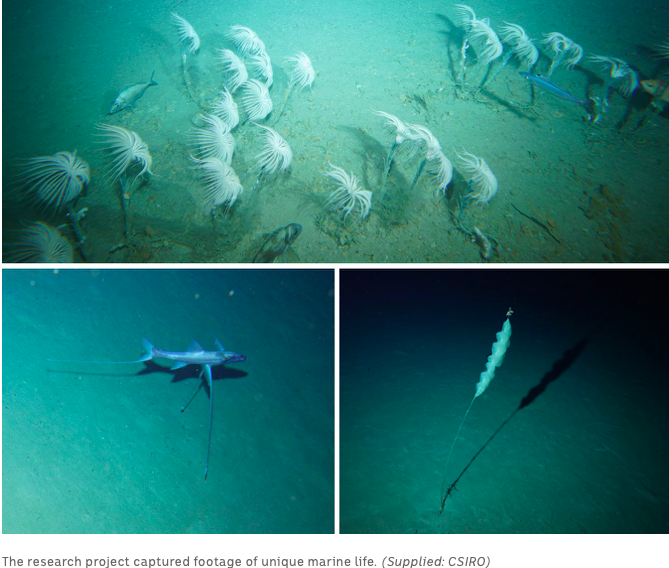
The new discoveries were made on-board the RV (research vessel) Investigator, the CSIRO’s research ship, which ventured out from Sydney for almost a month to research the unique ecosystem.
Researchers worked in collaboration with Marine Parks Australia and the Gumgaynggir Sea Country Rangers.
The group now believes the canyons could act as a « super highway », to help transport nutrients up to the shore, where they’re needed.
« The deep waters are a reservoir of nutrients and the key to the game is getting those deep nutrients up to the shallow waters, where wildlife and marine flora and fauna can make use of them, » Dr Chapman said.
« We think canyons might be a way that this happens. »
High-tech discovery
On board the Investigator a combination of sonar technology and high-definition cameras were the eyes for the scientists almost 4 kilometres below the surface.
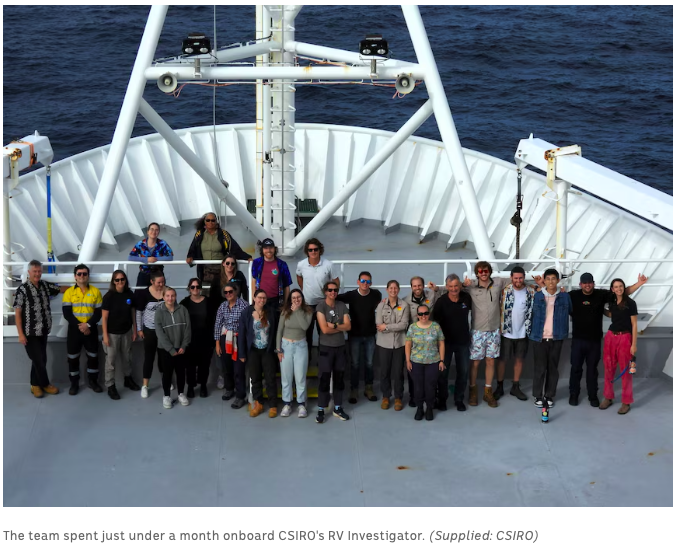
It’s something Marine Parks Australia’s Rob McKinnon says he’s never seen before.
« To see the life at depth is amazing looking at the towed camera — the fish life, the landforms down at the bottom of those canyons, » he said.
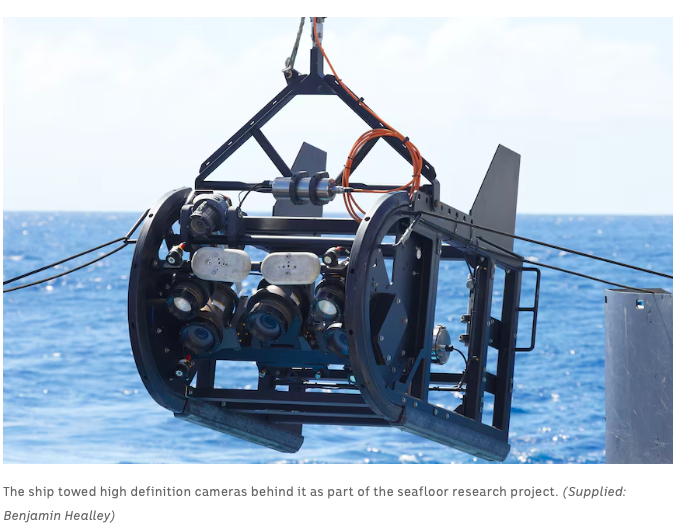
The camera quality goes well beyond other traditional forms of observation like scuba diving, giving a rare insight into species that are hard to spot.
« [Species] I heard about but never seen before, like the dumbo octopus and a really unfortunately-named fish called the bony-eared assfish, » Mr McKinnon laughed.
Data will be examined over years
The discoveries made on the Investigator will likely take years to sift through, with a large trove of data to analyse.
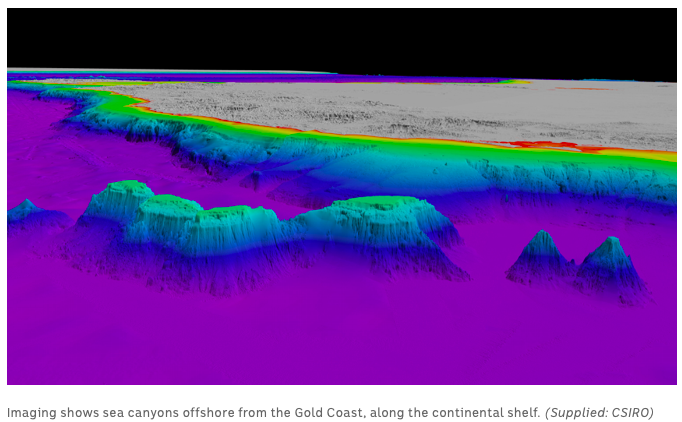
But scientists hope their discoveries will bring more light to the deepest and darkest parts of our oceans.
For Marine Parks Australia, those discoveries could help shape their management plans, which could be used to inform government policy, including fisheries and environmental regulations.
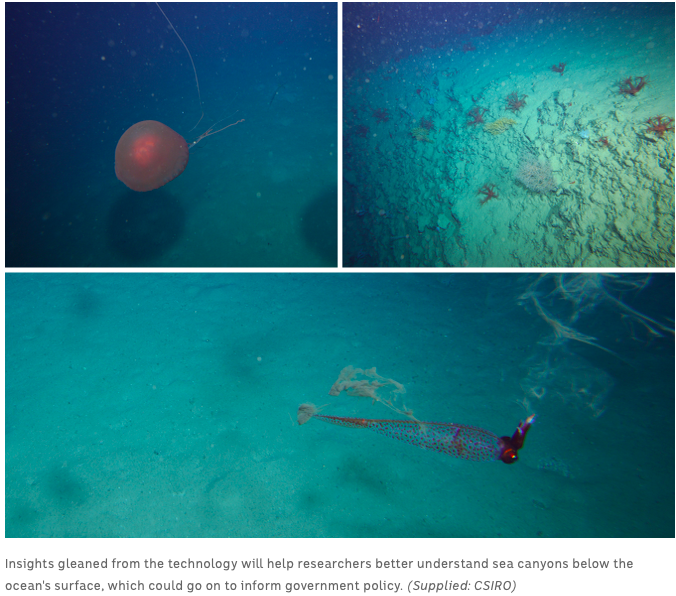
« That plan will come under review in the next couple of years and all this information that comes in will help that review, » Mr McKinnon explained.
Indigenous rangers now also have the knowledge of what lies below the ocean and what marine life is in their care.
The month-long journey was the first time ranger Angel Williams has lived on sea, and says the experience has been invaluable.
« Knowing exactly what’s down there, knowing what the sea floor looks like, is highly important to us, » she said.
« We do have a responsibility to look after what we call as kin, so when we have whale season and they pass through our country, we have an obligation to look after them. »
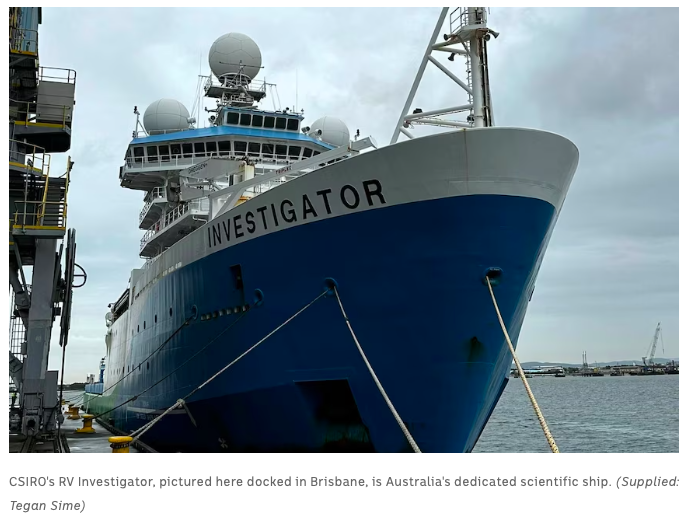
As for the Investigator herself, the vessel is off to dry-dock for a mid-life refit after sailing the seas for ten years.
A fresh lick of paint and new scientific equipment will be welcomed by the crew.
Source: ABC


